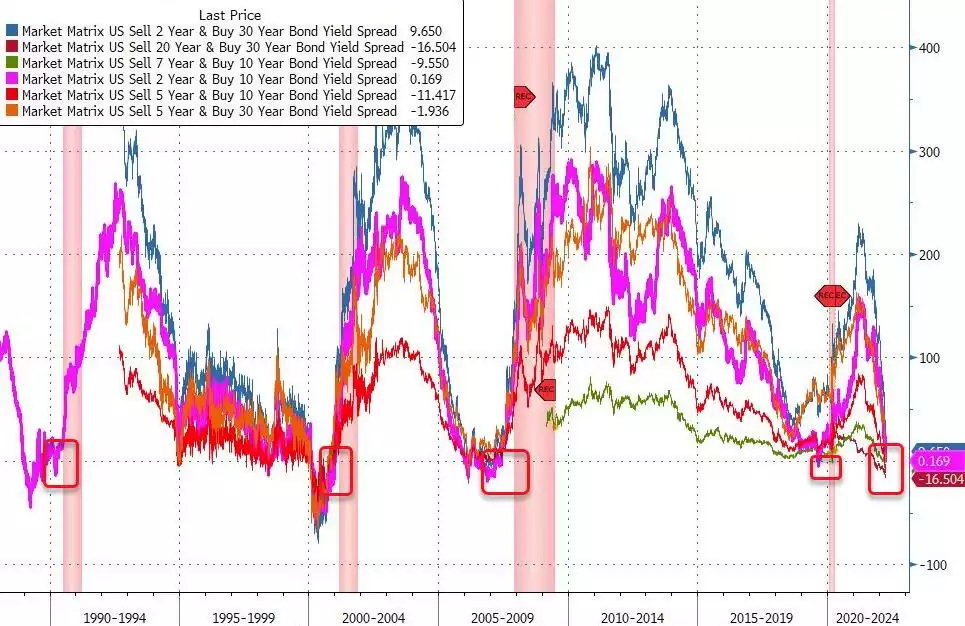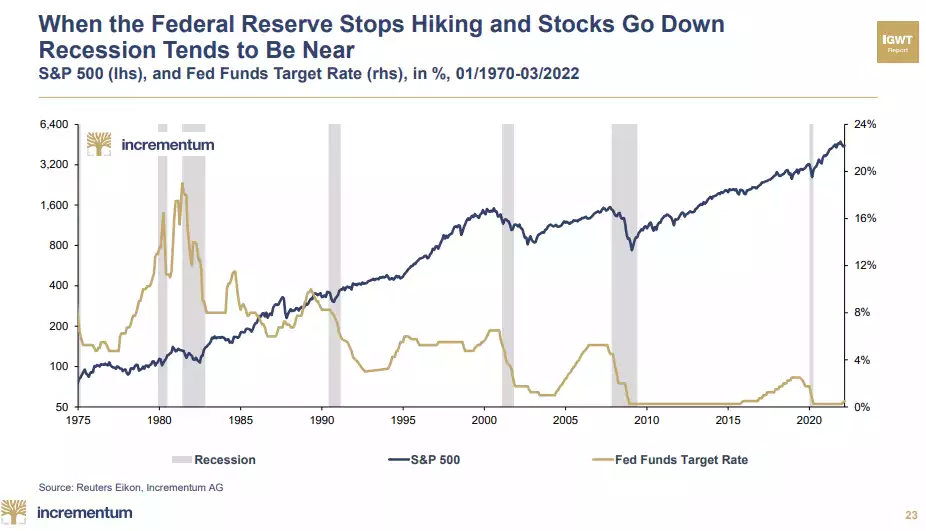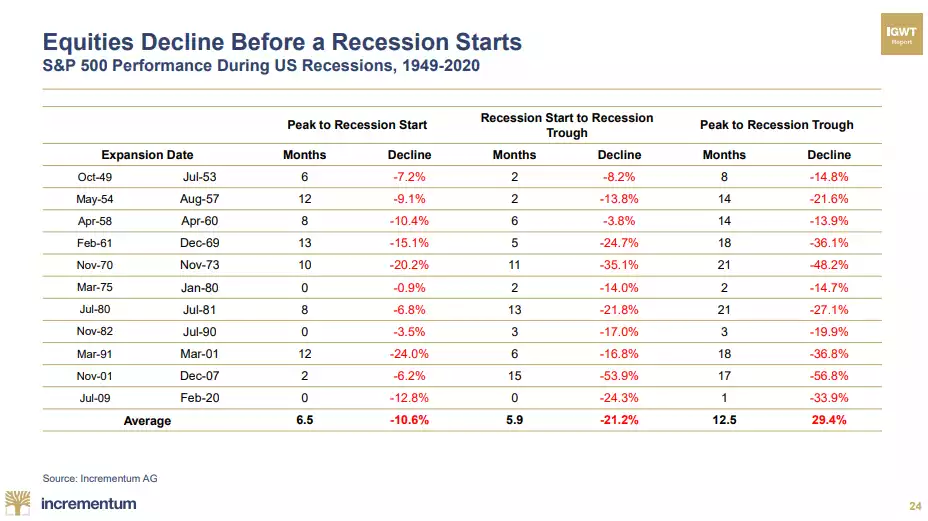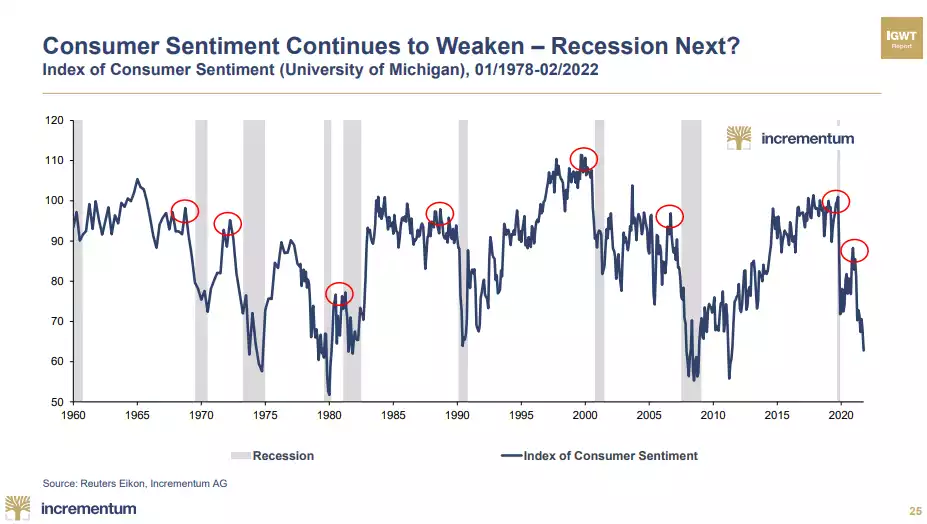Recession Baked In – What next?
News
|
Posted 30/03/2022
|
8461
On Monday we talked to asset performance in a stagflationary environment. Since then we have seen nearly the entire spectrum of US Treasury bonds invert, an event with a 100% track record of ushering in a new recession.

So what does a recession look like? As flagged on Monday we are sharing preview charts from the upcoming In Gold We Trust report. Topically they present just that… An inverted curve is simply the market saying they expect lower rates in the future (i.e. the Oops! from the Fed who realised they’ve crashed the party hiking and then aggressively cut/loosen)…

And before you think ‘well its not like a recession is tomorrow’ history shows equities fall INTO a recession not just in it…

Part of that is consumer sentiment is inextricably linked and it too is flagging recession dead ahead..

You will note in the first yield curve chart above the protracted bottoming after 1994. Could the same happen this time you might ask? In 1994, then Fed chair Alan Greenspan acted early and fast and engineered a soft landing in 1995 (albeit with much lower inflation and much higher starting rates). Joe Carson, who is the former chief economist at Alliance Bernstein, lays out why Powell will see the opposite…
“Policymakers' 2022 playbook is a "wing and prayer" strategy, hoping for a good outcome but unwilling to apply sufficient monetary restraint to get a good result. Current projections show a peak fed funds rate of 2.8% at the end of 2023, or less than half today's inflation rate. Soft landings of 1994 and 1984 came about with policy rates 300 to 600 basis points above inflation.
If lifting nominal interest rates well above inflation helped engineer a soft landing in the past, what are the odds of achieving a soft landing by doing the opposite? Close to zero, in my view. Also, policymakers expect the jobless rate to be even lower at the end of 2023 (3.5%) than today. So how does the Fed expect to break the wage-price cycle (Phillips Curve) without creating slack in the labor markets?
Fed Chair Jerome Powell has often said monetary policy is not on a preset course. Yet, it's on a preset path to fail this time as long as it let's inflation linger and keeps policy rates too low. Investors forewarned.”
The Fed often talks to the 2 golden rules of the Phillips Curve (principally between rates and unemployment) and the Taylor Rule (rates, inflation and GDP). Whilst the Phillips Curve (as referenced by Carson) is screaming higher rates, they pale compared to The Taylor Rule which is indicating rates need to be a whopping 11.55% to get back to what is traditionally considered ‘normal’. Imagine the effect of that on the world’s biggest ever debt pile…
For a better understanding of why an inverted yield curve is such a flag, this explanation as to why and why excuses of QE or COVID or war mean nothing to the bigger picture by Deutsche Bank's economist Jim Reid is worth reading and understanding. See if you can spot the reference to buying gold….
“...for me I think about it very differently. I don’t care why the curve inverts as I think the transmission mechanism is through animal spirits. When a curve is steep it should encourage entrepreneurial behaviour as borrowing costs at the front end are low relative to potential returns. In an inverted curve environment, the rational investor/entrepreneur/business should be more risk averse and either place more money in safe assets at the front end or do less animal spirits enhancing longer-term investments/economic activity.”